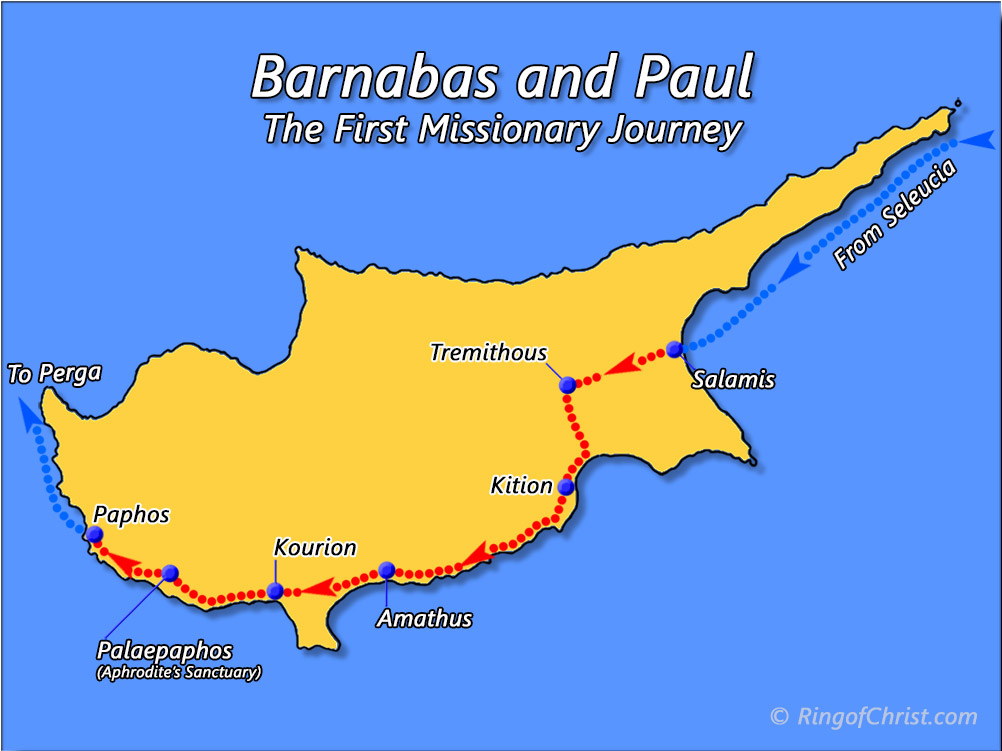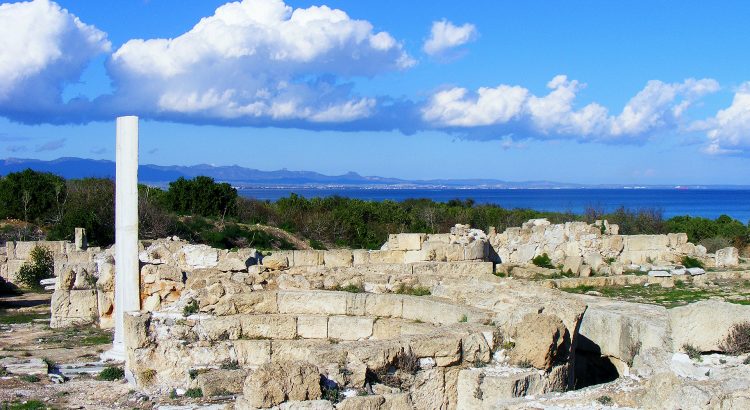The fact that Cyprus has been part of Mediterranean trading routes for centuries is a contributing factor to the early arrival of Christianity on the island in the 1st century.
Early Christianity spread along Roman trade routes
Most Mediterranean ports date to the Phoenician Period and the export of a vast number of products especially copper, from which its Greek name was derived…Kypros, placed Cyprus at the heart of trade in the eastern Mediterranean from the beginning of commerce. When the Romans arrived, all was in place to expand the trading network throughout their whole empire and beyond.

Roads and commercial sailing routes connected the entire Roman Empire making travel accessible to those escaping persecution and/or spreading The Word, as the New Testament attests. Christian commitment was strong in Cyprus from the beginning of the first century AD.
An Overview of early Christianity in Cyprus.
After the stoning of Stephen in Jerusalem, followers of The Way fled to the island. Christians from Cyrene and Cyprus went to Antioch to preach.
According to Cypriot tradition, Lazarus caught a boat in Jaffa and came to Cyprus where he was ordained by Barnabas and Paul as first bishop of Kition. His tomb is beneath his basilica in Larnaca (Kition.)
Paul and Barnabas took a boat from Seleucia to Salamis on their first missionary journey, then left from Paphos for Perga.
Chart their Missionary Journey’s path to Paphos, where Paul’s first miracle is recorded:
“Acts of Barnabas” Barnabas and Mark returned from Turkey. Barnabas met his martyrdom and was buried in Salamis:
Mark left Cyprus and sailed to Egypt.
Early Christianity established a permanent presence in Cyprus
Cypriots worshiped in cave churches and catacombs originally, and later in grand basilicas that were first built in the late 5th Century.

St. Helena brought pieces of the True Cross and established monasteries to house them, among them Stavrovouni.
On July 21, 365AD, the entire Eastern Mediterranean was hit by a massive earthquake. The city of Kourion was devastated, killing Jews, Christians, and pagans alike.
By the end of the 4th century, Christianity had spread throughout the island, and by the 5th century basilicas were prominent in most major cities often built on top of or adjacent to synagogues. In 478AD the remains of St. Barnabas with the Gospel of St. Matthew were found in the necropolis of Salamis.
In the 5th Century, Eustolios of Kourion dedicated his house to Christ and had it decorated with mosaics depicting Christian symbols.
Christianity in Cyprus, as in all the Roman Empire, slowly and steadily, through adversity and persecutions, triumphed over paganism in the first centuries of the millennium. Throughout Cyprus there is abundant archaeological, historical, and Biblical evidence documenting the presence of active Christian communities across the island, beginning in the first century.



